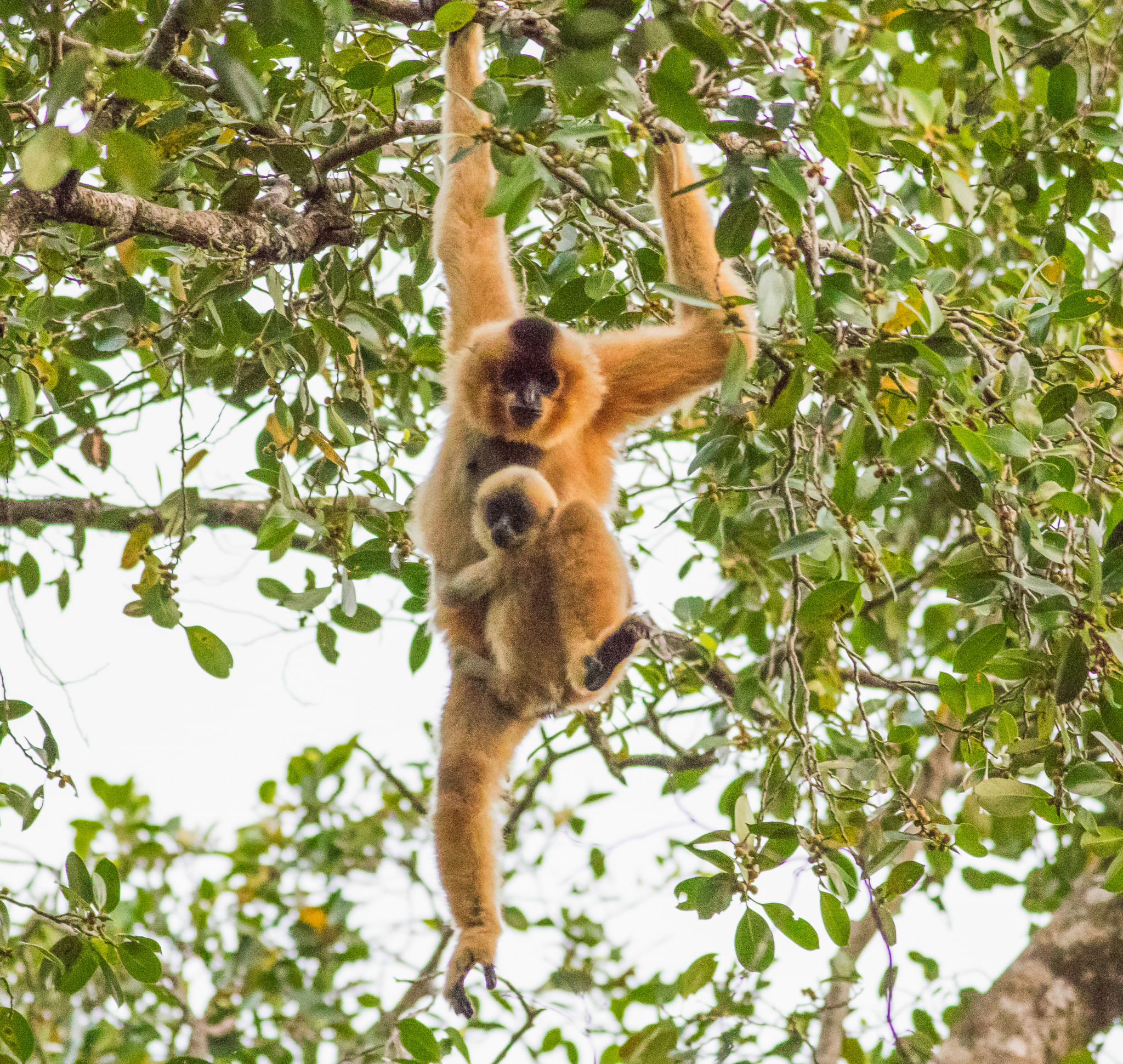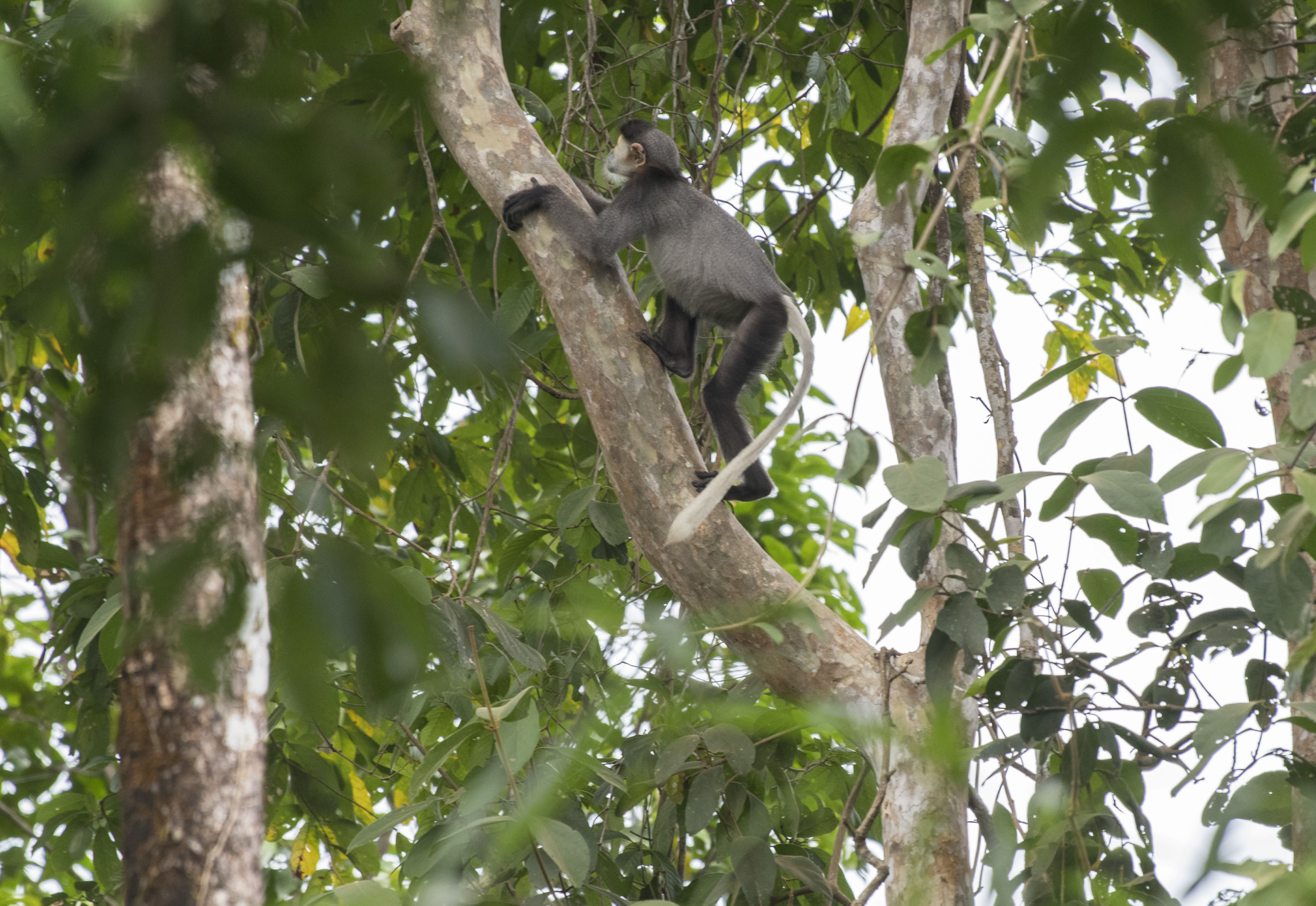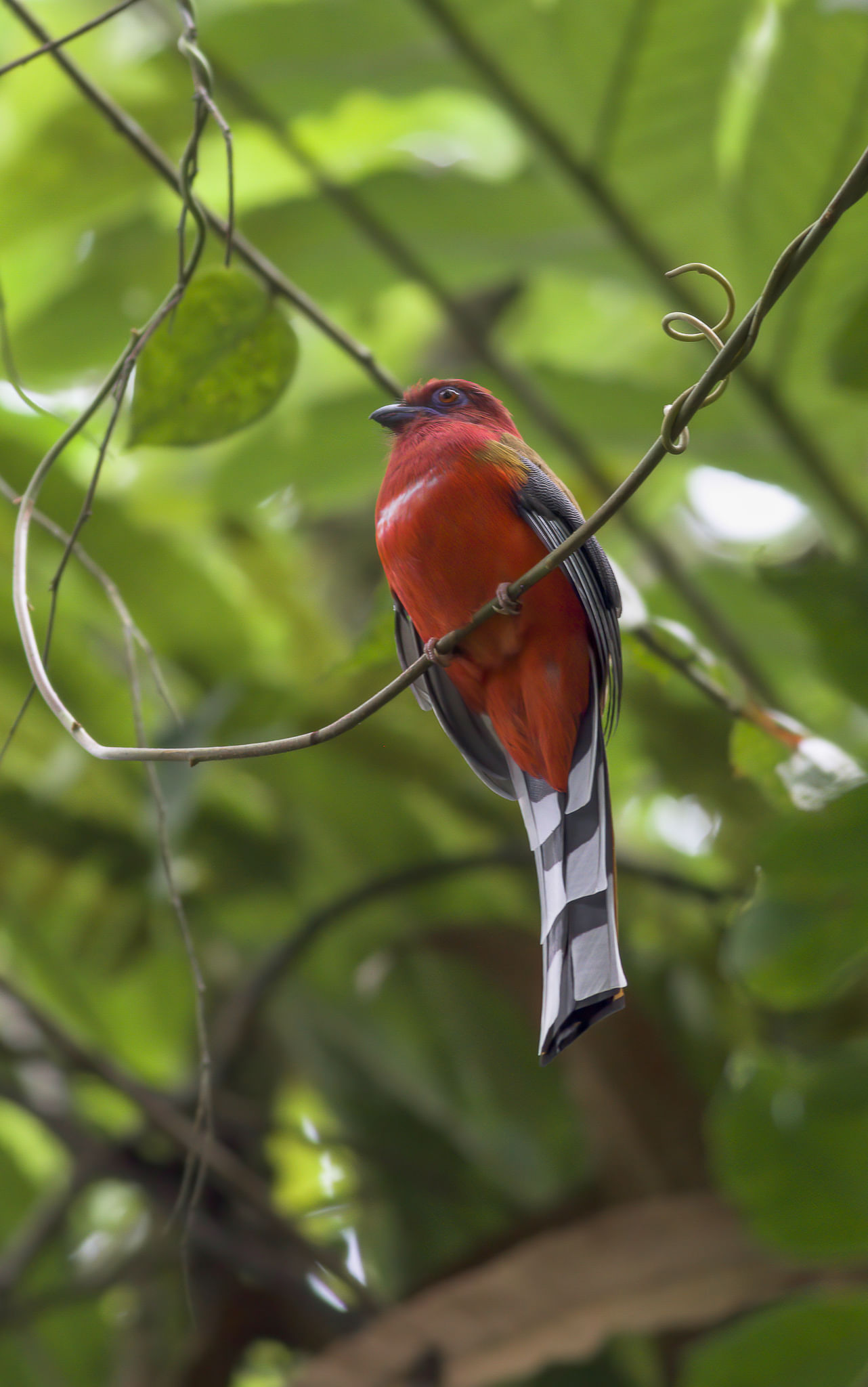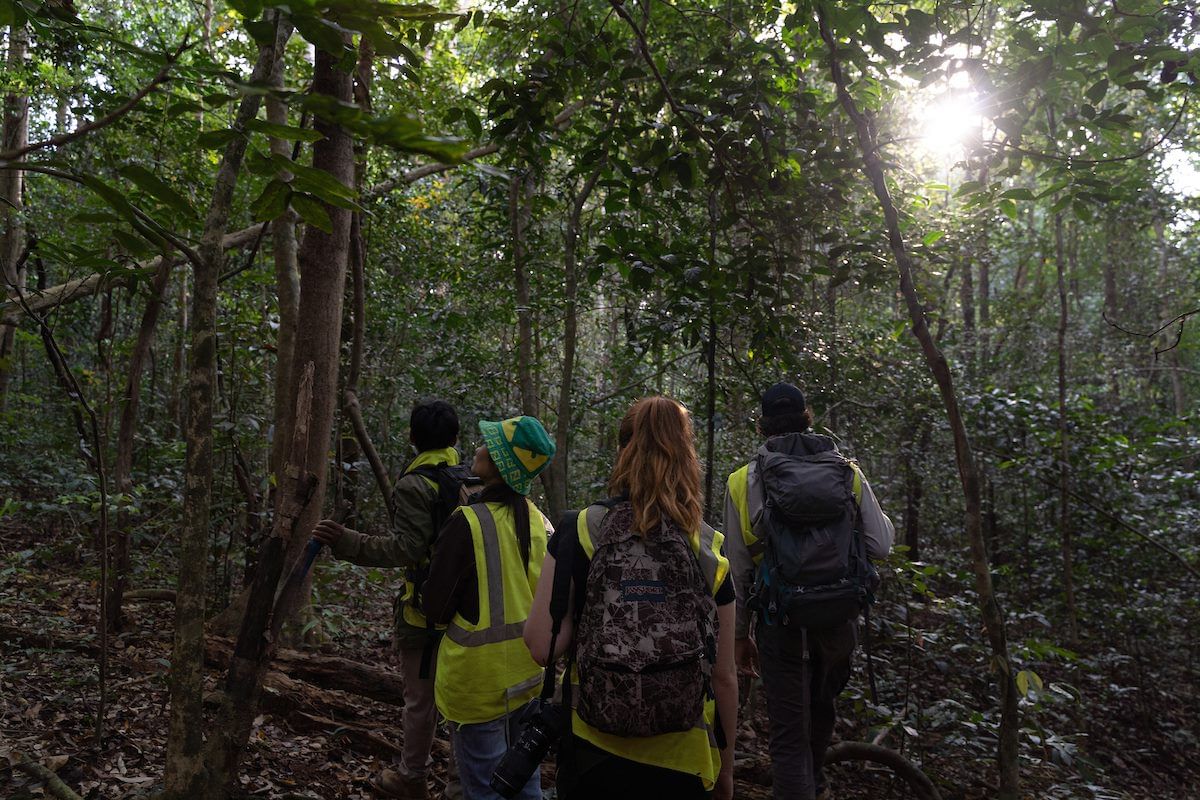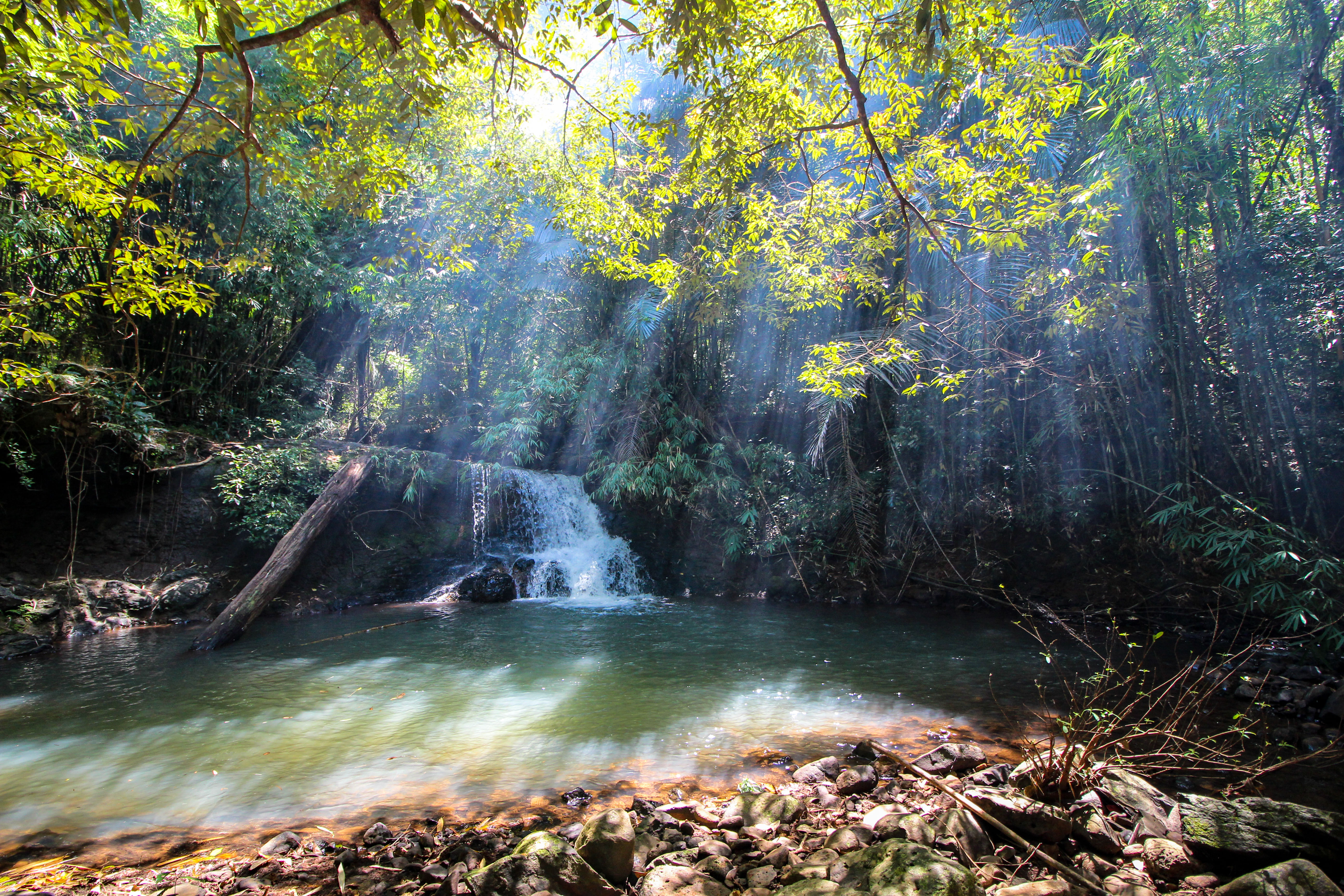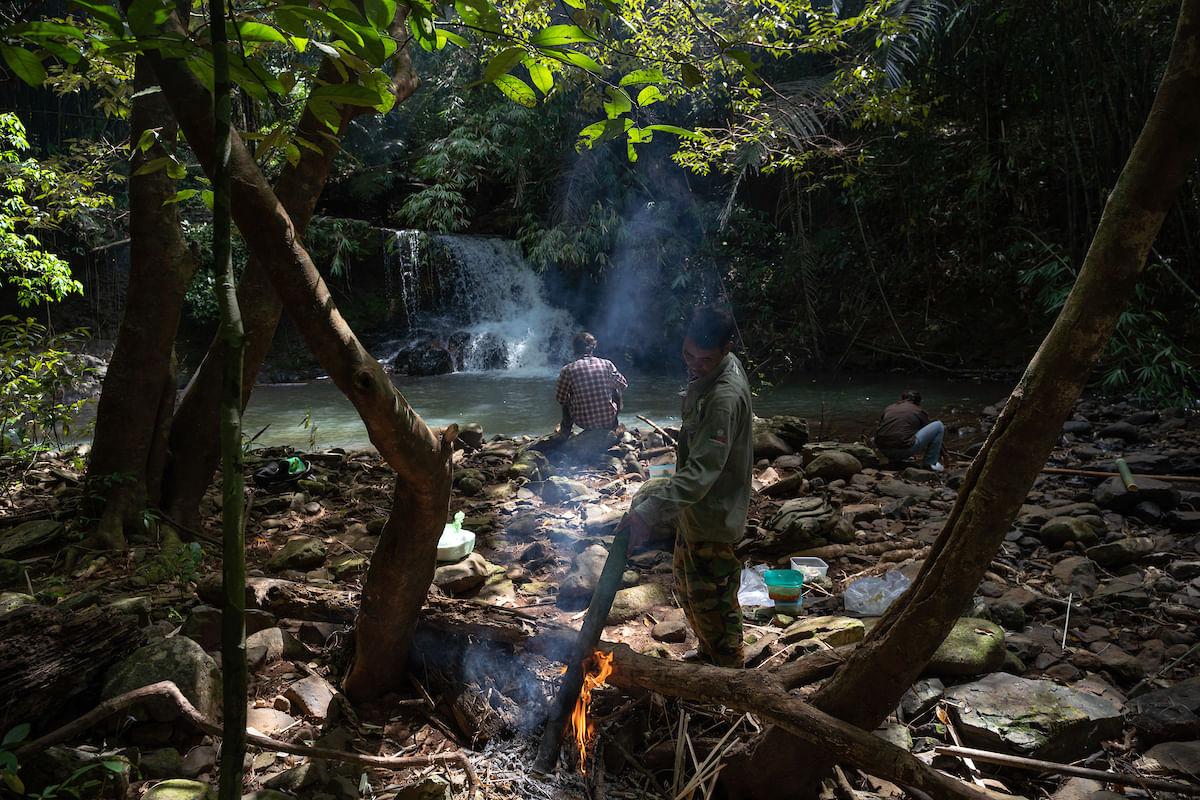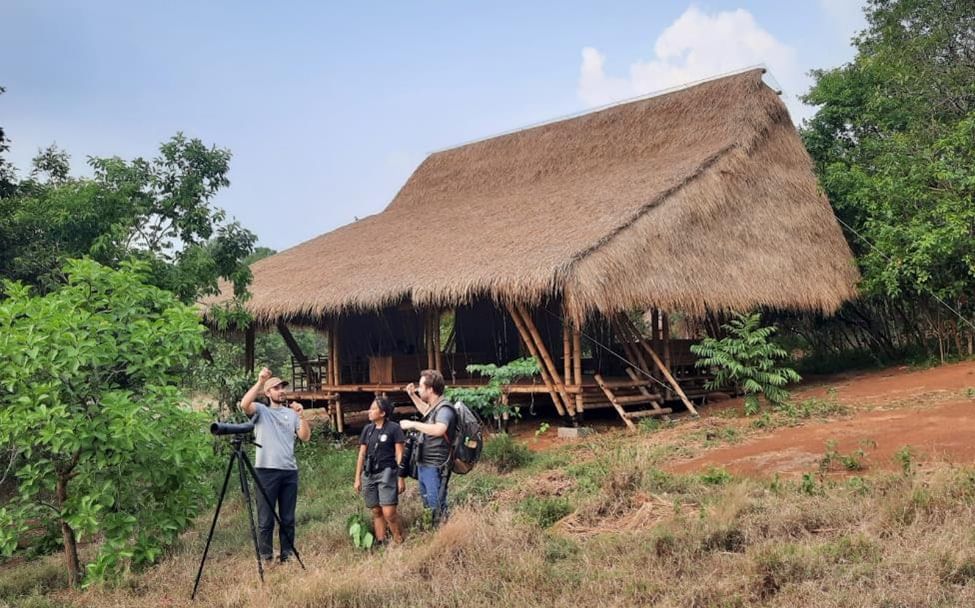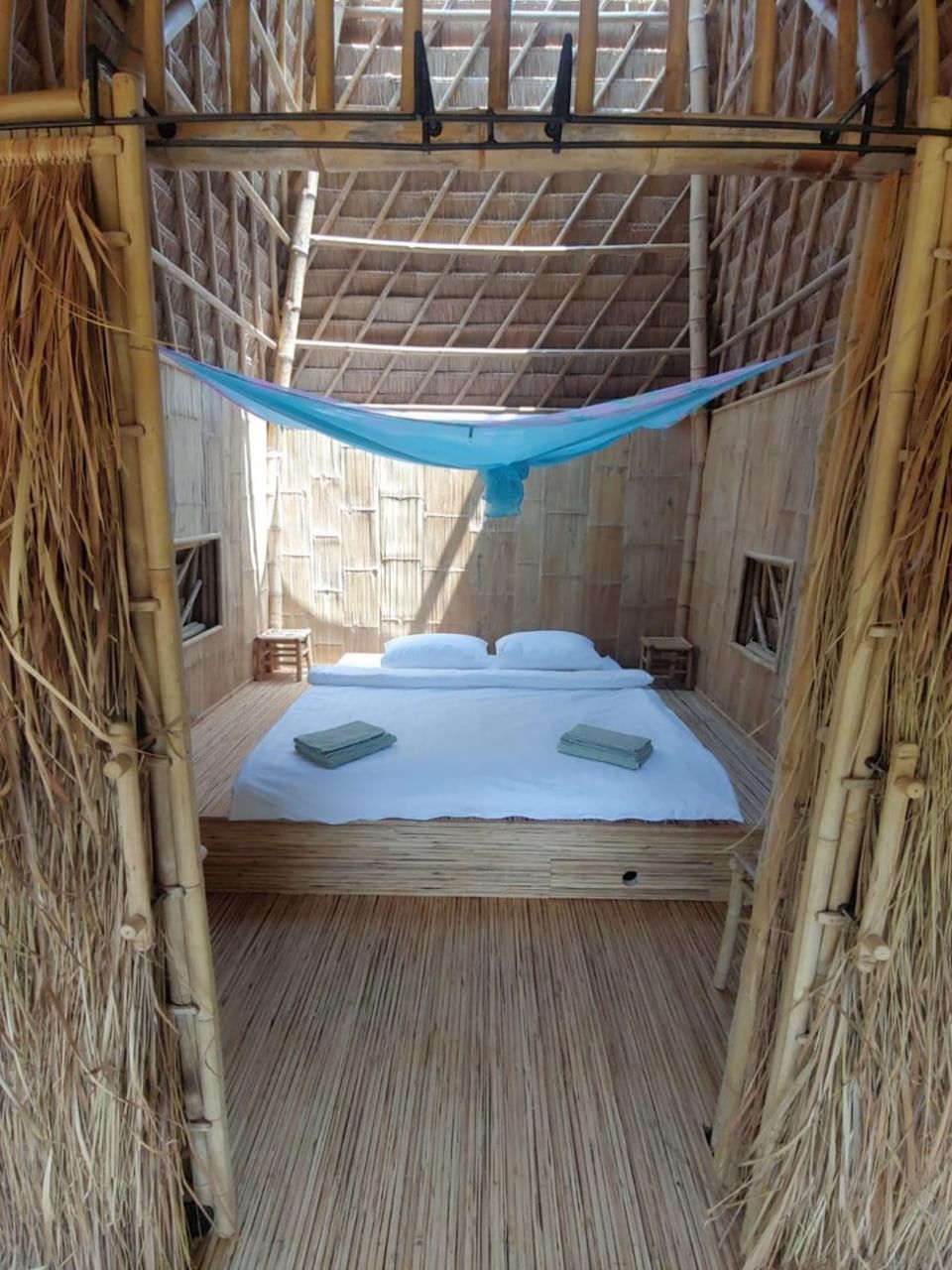Explore Jahoo
Witness the jungle at night whilst in comfort at the iconic bamboo camp
Experience the Wildlife Sanctuary at night at the iconic Bamboo Camp, search for wild gibbons as they sing their dawn chorus and witness indigenous forest knowledge.
Highlights:
- Experience the jungle by night and observe the shy and mysterious nocturnal creatures whilst sleeping in comfort at the unique Bamboo Camp
- Wake up to the eerie call of the endangered yellow-cheeked crested gibbon before joining them in the forest at sunrise
- Trek through lush rainforest spotting rare black-shanked douc-langurs and encountering other unique forest wildlife
Three Tour Packages
Jahoo Community-led Tour: Experience Jahoo and Keo Seima Wildlife Sanctuary with local Bunong guides. Adventure into the forest spotting wildlife with the help of your local guides unique forest knowledge and skills.
English-speaking Zoologist Guide Tour: Highly recommended for families and wildlife enthusiasts! Add as part of your package together with local Bunong guides and get a more in depth educational experience of the forest and its wildlife. The additional cost is donated to the Gibbon Fund for local community conservation and social development action.
Birding Guide Tour: Jahoo and Keo Seima Wildlife Sanctuary are home to a variety of rare bird species including some local endemics restricted to the Southern Annamite Mountain Range. Purchasing this tour will include an expert bird guide from Sam Veasna Conservation Tours, the most experienced Khmer English-speaking bird guides in Cambodia
Key Species:
Birds: Germain’s Peacock-pheasant, Siamese Fireback, Scaly-breasted Partridge, Orange-necked Partridge, Green Peafowl, Great Hornbill, Bar-bellied Pitta, Blue-rumped Pitta, Grey-faced Tit babbler, Grey-eyed Bulbul, Red-vented Barbet, Green-eared Barbet, Black and Buff Woodpecker, Pale-headed Woodpecker, Great Slaty Woodpecker, Great Hornbill, Banded Kingfisher, Indochinese Barbet Mammals: Pig-tailed Macaque, Southern Yellow-cheeked Crested Gibbon, Black-shanked Douc Langur, Pygmy Slow Loris, Lesser Mouse Deer, Black Giant Squirrel, Cambodian Striped Squirrel, Small-toothed Palm Civit, Masked Palm Civit, Sunda Colugo (Red Muntjak, Sunbear tracks can be seen)
Habitat: Semi-evergreen rainforest with patches of bamboo undergrowth intersected by seasonal streams and dotted with waterfalls




